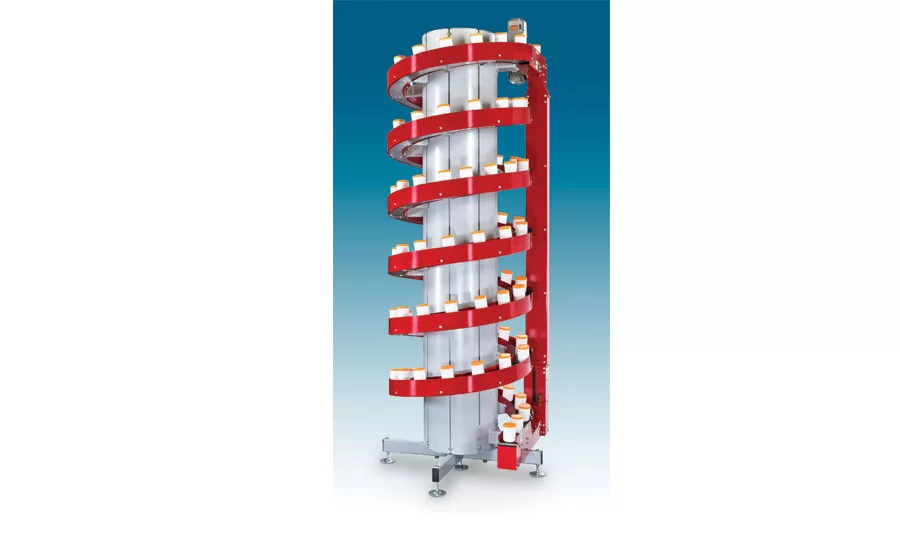Beverage-makers require more from conveyor systems
Systems need to handle lighter packages, growing SKU base

As parents of school-aged children begin their search for caregivers in anticipation of summer break, websites like sittercity.com and care.com offer them an opportunity to lay out the qualities and requirements for which they are seeking. Much like a parent’s checklist for babysitters, beverage-makers’ growing list of must-haves for conveyor systems have proliferated.
Among the trends that have contributed to the growing demands is SKU proliferation.
“Beverage companies are pushing to expand their portfolios by offering a variety of products for consumers, such as eco-friendly designs [and] smaller bottles,” says Boyce Bonham, chief engineer for Jonesboro, Ark.-based Hytrol Conveyor Co. Inc. “With that initiative comes the challenge to accommodate these multiple boxes and open tray sizes for already existing or newer conveyor systems. If you have both large and small cases all on roller conveyors, there is a likelihood that these cases could collide and be damaged.
“Conveyor system manufacturers are working on their systems to convey product at slower speeds while looking at other ways to increase throughput,” he continues. “Options such as belt conveyors, driven roller conveyors with tighter centers (around 2 to 3 inches) and/or operating at slower speeds provide more accurate control over the beverage cases when sorting and distributing product. With better and more accurate control, companies can still achieve higher throughput without the risk of damage.”
Ole Rygh, president and chief executive officer of Ryson International Inc., Yorktown, Va., also notes the impact that SKU proliferation has had on conveyor systems and how original equipment manufacturers (OEMs) are adjusting to this ongoing trend.
“The SKU proliferation and resulting shorter production runs have not only increased the need for more flexibility and higher speeds but also the need for faster changeovers,” he says. “A good example of this is our new Narrow Track Spirals, which are a good alternative to side gripper elevators because the spirals can run at high speeds and do not need to be adjusted for varying product sizes. The same thing goes for our Mass Flow Spirals, which can handle high volumes and do not need any change parts for different size products.”
Hytrol’s Bonham adds that the lightweighting of primary and secondary packaging for beverages has resulted in OEMs adjusting the speed and types of belt systems being used.
“Instead of 40-pound cases that must be unloaded to a lighter 25 or 30 pounds, beverage companies can drive a higher throughput in the number of cases that are being handled through the system,” he explains. “With the reduced weight comes a drawback of using less sturdy materials in the construction of these packages. To accommodate these fragile items, conveyor system manufacturers utilize belt conveyors, closer roller centers on driven roller conveyors and slower conveying speeds to handle these more delicate packages.”
As the beverage market continues to evolve, conveyor system manufacturers have taken the necessary steps to support its customers.
“With the growing number of brands, varieties, packages and flavors available in the beverage market, the beverage market’s conveyor systems have had to adjust the shapes of these packages as well, especially when dealing with multi-level systems,” Bonham says. “You can’t distribute these packages [at] the same angle as others. Smaller and/or taller packages on an incline/decline are prone to tumbling over into other packages or off the conveyor itself compared to universally sized packages. The solution relies on transporting items at a gentler incline/decline angle to prevent these cases from toppling over.”
Bonham adds that Hytrol offers a range of conveyor solutions, including its E24 system, which features 24-volt motor technology.
“Dealing with potential spillage scenarios can cause a lot of headaches for distribution centers,” he explains. “With these motors installed, spillage goes through the conveyor and doesn’t damage the system. You’re also able to control a product’s gradual speed as it travels down the line without connecting additional drives to vary the speed. It’s an economical and cost-efficient way to prevent spillage, prevent damage to packages and to meter that line’s speed to prevent collisions.
“In addition, our roller accumulation and belt conveyor systems are a popular option for safely transporting product to and from a distribution center,” he continues. “Paired with Hytrol’s ProSort sliding shoe sorters, these systems allow for beverage-makers and distributors to achieve a higher throughput while keeping product intact throughout the automated distribution process.”
AmbaFlex Inc., Arlington, Texas, continues to support the growing needs of consumer packaged goods manufacturers. At this year’s ProMat, it showcased its SpiralVeyor SVe series. Equipped with a belt as wide as 48 inches, the SVe has resolved many parcel-handling challenges in distribution centers around the world, the company says. BI
Looking for a reprint of this article?
From high-res PDFs to custom plaques, order your copy today!






